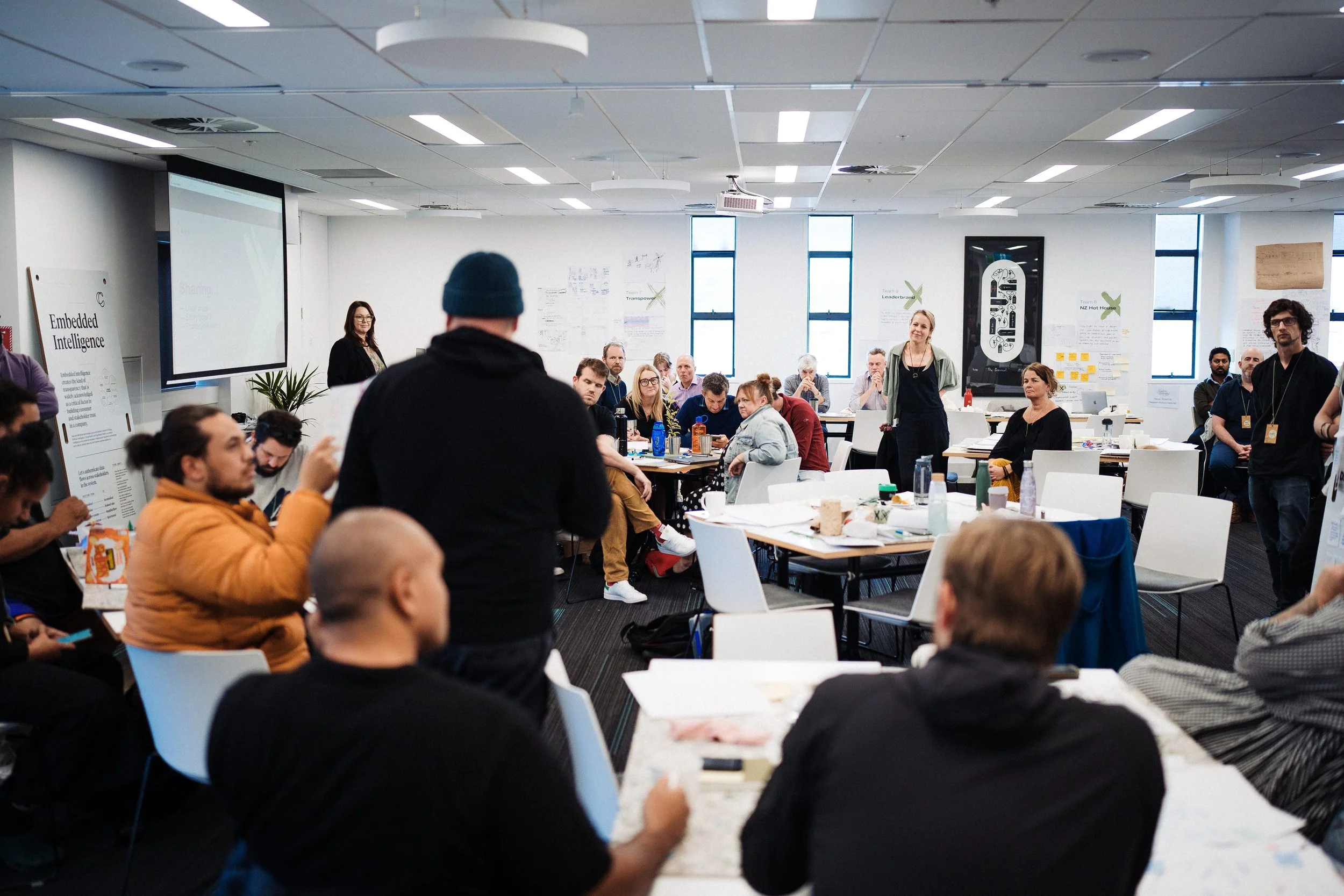Designing a regenerative future for how to grow our food
Have you ever considered all the elements that go into the process of growing the tomato you see on the supermarket shelves. At XLabs LIVE, we got to understand a bit more about the scale of the operations that take place, and the waste that comes along with the extensive growing process.
With the generous support of the Franklin Local Board and Christina Rogstad, New Zealand’s leading producer of hothouse tomatoes and cucumbers, NZ Hothouse, attended XLabs LIVE. They brought with them the challenge of how they might design out the 404 tonnes of contaminated green waste they send to landfill each year.
The transition towards a circular economy requires an intimate investigation of all materials and systems within a business, beyond just the obvious. To truly achieve waste or emissions reductions, businesses must reflect on their products' physical characteristics as well as how they are distributed, consumed, and disposed of.
“XLabs allowed NZ Hothouse to take a step away from the day-to-day tasks and look at the business from a different lens. Taking the time to identify the root cause for waste and how to solve these daunting issues one step at a time.”
— Claudia Wharfe, Marketing Executive, NZ Hothouse
One of the big issues with NZ Hothouse's green waste, consisting mostly of vines, was contamination by the plastic clips and twine required in the tomato growing process — meaning that composting wasn’t an option. NZ Hothouse’s focus has been to produce tomatoes predominantly through the difficult winter period. This requires the use of truss clips or supports that have traditionally been made from hard plastics that are difficult to dispose of. XLabs helped to seek out biodegradable alternatives.
Over the course of the week, the team looked at new materials to design out the waste entering the glasshouse, but also how can they dispose of the waste that arises after the tomato life cycle is complete. The final decision was made to go with compostable twine, as well as bio-based clips to be used on the crop where needed. They also identified growing techniques that could be altered to largely reduce the need for a truss clip. NZ Hothouse’s end goal is to compost this waste on site and sell the final product onto local growers.
Through this redesign process, NZ Hothouse will use Circularity’s Circular-by-Design methods of Smart Materials, Regenerative Behaviours, and Closed Loop Systems in order to divert this green waste from landfill and compost it instead, capturing methane and creating new value for the business in the process.
“The XLabs journey was hugely illuminating for NZ Hothouse. The process and system employed by the XLabs team allowed us to deep dive our organisation and expose the circular opportunities that were there for the taking”
— Claudia Wharfe, Marketing Executive, NZ Hothouse
Has Claudia and her team inspired you? How can you think about products or systems in your business in a new or creative way?
XLabs is made possible through partnership with Ministry for the Environment/Manatū mō te Taiao, Tātaki/Auckland Unlimited, New Zealand Trade and Enterprise, Toitū Envirocare, Kantar, Callaghan Innovation, Trees That Count, Greenhouse Capital New Zealand, and Circularity.

